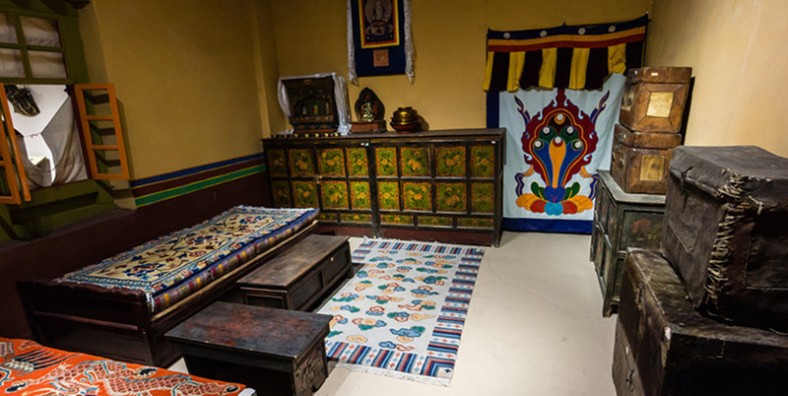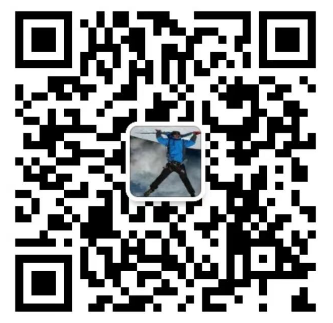
Tibet Museum, Lhasa
Location: Lhasa, Tibet Autonomous Region, China
Inauguration: October 5, 1999
Type: Official Museum of the Tibet Autonomous Region
Introduction to Tibet Museum
The Tibet Museum in Lhasa is the first large-scale, modern museum in the Tibet Autonomous Region (TAR) and serves as the official cultural and historical repository of Tibet. Opened on October 5, 1999, the museum plays a pivotal role in preserving and showcasing the rich cultural heritage of Tibet, its history, art, politics, religion, and everyday life. The museum’s collection contains over 1000 artifacts representing Tibetan civilization from its earliest days to the present.
Exterior Architecture and Design
The Tibet Museum‘s building is an impressive blend of modern architecture and traditional Tibetan elements, providing an architectural representation of Tibetan culture and history.
Building Structure
The museum is located at the base of the Potala Palace, one of Tibet’s most iconic landmarks. The building is shaped in an L-formation and is strategically positioned on Norbulingka Road, which runs through central Lhasa. The exterior is characterized by the use of grey brick and dark brown and white roof furnishings that are highlighted by a golden-orange gilded roof, a feature symbolic of Tibetan Buddhist architecture.
The design of the building reflects both modernity and Tibetan cultural tradition. This juxtaposition of elements symbolizes the museum’s purpose: to bridge the ancient with the modern, offering both preservation and innovation.
Courtyard Design
The central courtyard of the museum is especially remarkable. It features a sleek, white floor and is designed in a black-and-white origin pattern in the middle. The courtyard is bathed in light from large skylights above, which create a serene, contemplative atmosphere reminiscent of traditional Tibetan monastic complexes. The space has been carefully curated to evoke the spiritual and aesthetic qualities of Tibet’s heritage.
Area
- Total land area: 53,959 square meters
- Total construction area: 23,508 square meters
- The museum is structured into three primary sections: a main exhibition hall, a folk cultural garden, and an administrative quarter.
Interior Exhibitions and Layout
The Tibet Museum is dedicated to educating the public about Tibet’s diverse culture and history. The museum’s exhibition area spans 10,451 square meters, with multiple galleries organized by themes such as Tibetan prehistory, political history, cultural arts, and people’s customs. The museum’s layout is designed to take visitors on an immersive journey through Tibet’s evolution and identity.
Exhibition Highlights and Sections
Prehistory Section
This part of the museum explores Tibet’s prehistoric origins, showcasing items from over 50,000 to 3,000 years ago.
- Artifacts: The collection includes stone tools, pottery, bone objects, and metal objects uncovered from important archaeological sites such as Karuo and Qugong, which offer insights into the Neolithic culture on the Tibetan Plateau.
- Flora and Fauna: A section is dedicated to the flora of Tibet, showing the wide range of plant life that has evolved in this harsh, high-altitude environment. The museum also displays various geological samples to demonstrate Tibet’s unique natural environment.
Political History Section
The political history of Tibet is one of the most significant sections of the museum. It spans the political exchanges between Tibet and China over many centuries, starting from the Tang Dynasty up to the modern era.
- Seals and Documents: Numerous seals, official documents, and historical gifts highlight the political relations between Tibet and different Chinese dynasties, as well as Tibet’s relationship with the Han Chinese.
- 17-Point Agreement: The museum features the original copy of the 17-point agreement, signed in 1951, marking Tibet’s reunification with China after many years of political and military conflict.
- Golden Urn: The Golden Urn on display was historically used by the Chinese imperial court to select a disputed Panchen Lama, further demonstrating the political influence of the Chinese government in Tibetan religious matters.
Cultural Arts Section
This section is divided into eight major areas, each exploring different facets of Tibetan cultural arts. It reflects Tibet’s rich traditions in art, literature, music, and more:
- Tibetan Script and Literature: Ancient Tibetan-script books and scrolls, many of which contain Buddhist scriptures and historical texts.
- Tibetan Theater and Performance Arts: Exhibits include Tibetan opera masks, costumes, and performance props that reflect the role of theater in Tibetan society.
- Musical Instruments: A selection of traditional Tibetan musical instruments, such as the drums, flutes, and stringed instruments used in religious rituals and performances.
- Tibetan Medicine: A fascinating collection of medicinal texts and herbal remedies, showcasing Tibetan holistic medicine.
- Astronomy and Calendar Reckoning: The museum presents Tibetan astronomy, including detailed charts and calendars used to predict auspicious times for religious and agricultural events.
- Tibetan Sculpture: This collection includes sculptures of Buddha, Bodhisattvas, and Tibetan deities crafted from stone, wood, gold, and bronze.
- Thangka Painting: Thangka paintings (Buddhist scroll paintings) on silk and paper, illustrating Buddhist cosmology, deities, and spiritual themes.
- Jewelry and Handicrafts: Rare Tibetan jewelry, made from gold, silver, and jade, and Tibetan handicrafts, including beautifully crafted baskets, ceramics, and embroidery.
People’s Culture and Ethnography Section
This section delves into the everyday life of the Tibetan people, shedding light on their traditional customs, dress, tools, and communication practices:
- Traditional Clothing: Displays feature the colorful costumes and distinctive style of dress worn by Tibetans in various regions, including ceremonial attire and handwoven fabrics.
- Daily Tools and Utensils: Items such as cooking utensils, farming tools, and domestic instruments that showcase the practical, everyday life of Tibetan families.
- Arts and Crafts: The museum offers a detailed examination of Tibetan arts, including woven rugs, pottery, and wooden carvings that reflect the craftsmanship passed down through generations.
- Communication: Information on Tibetan language, script, and the methods of communication traditionally used by Tibetans, both verbally and non-verbally.
Other Features and Facilities
Multimedia Displays
Interactive audio tours and multimedia guides are available in several languages, including English, Chinese, and Tibetan, making the exhibits more accessible to international visitors. These multimedia tools provide deeper insights into the cultural and historical significance of each display.
Folk Cultural Garden
The folk cultural garden is an outdoor section that features sculptures and installations celebrating Tibetan folk culture and architecture. It provides visitors with the opportunity to engage with the environmental and architectural heritage of Tibet in an open-air setting.
Visitor Information
Opening Hours
- Daily: 9:00 AM to 5:00 PM
- Special Hours: The museum may have different hours during public holidays or festivals.
Admission
- Free for local Tibetans.
- Nominal fee for international visitors.
- Discounts for students, elderly, and group tours.
Location
- The museum is located near the Potala Palace, on Norbulingka Road, which is easy to access from major landmarks like the Jokhang Temple and Barkhor Street.
The Tibet Museum is a rich cultural and educational resource, offering visitors a deep dive into Tibet’s cultural history, artistic traditions, and political evolution. Whether you are a history enthusiast, a lover of art, or simply curious about the unique heritage of Tibet, the museum provides an enriching and informative experience. Its careful preservation of Tibetan culture ensures that future generations can appreciate the region’s ancient traditions while also learning about its dynamic contemporary culture.
















